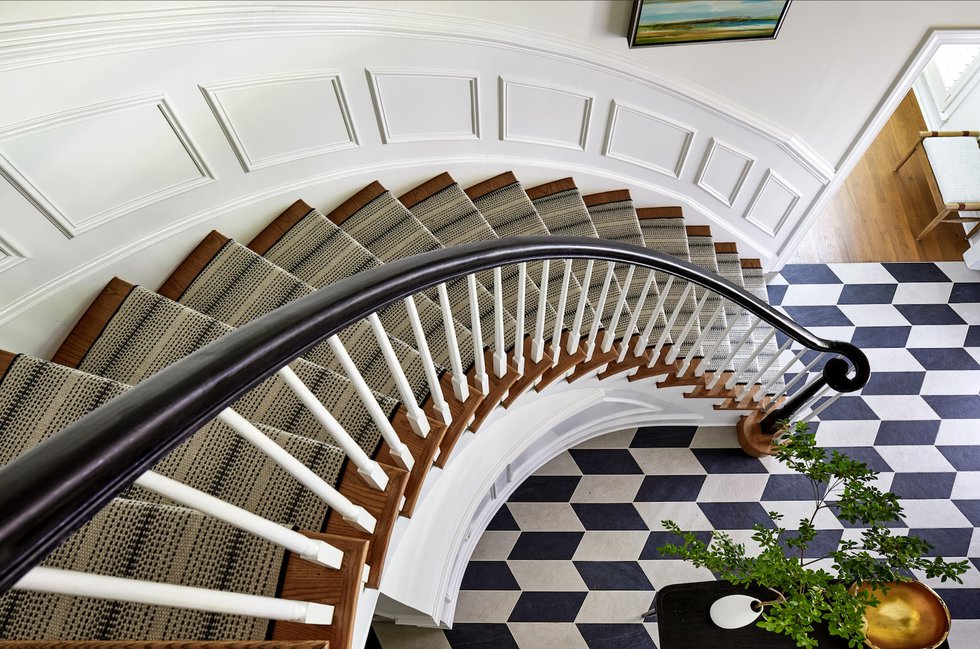Before hiring a landscaping expert, it’s important to know who to look for.

(Illustration by Jimmy Holder)
If we learned one thing from the recent surge in home redesign and renovation, it was that professional help can make a world of difference. And now that we’re all enjoying our outdoor spaces again—heat and humidity aside—you may be scanning your garden to ponder what-to-plant-where or asking bigger questions, like “Where can I put a pool?’’
While it’s tempting to ask your neighbor or the guy at the garden center for advice, outdoor projects, like indoor ones, often benefit from the keen eye of a professional. But the options can be confusing. Will someone calling themselves a “landscaper” do the trick? Or would a landscape designer or even a landscape architect be in order?
As with most improvement projects, the answers depend on your goals and your budget. “It’s about the size and scope of your project,” says Rob McGinnis, a landscape architect and associate principal at Kennon Williams Landscape Studio in Charlottesville.
First, it helps to understand the differences between a designer and an architect in landscape work. A landscape architect generally works on larger public or private projects which may involve significant planning and designing, often overlapping with engineering aspects like managing stormwater systems or incorporating infrastructure such as a bridge, parking lot, or tunnel. Public parks, college campuses, and shopping plazas are all areas that likely involve a landscape architect.
McGinnis says his firm is predominantly involved with large public and land development projects, but its portfolio also includes larger-scale design work on estates and large farms around Charlottesville. Landscape architects, like their counterparts for buildings, provide plans. They do not install landscaping materials. While landscape architect fees also vary widely, a minimum of $1,200 to somewhere north of five figures is an approximate range for a residential project. A landscape architect may then shift to an hourly rate if the homeowners want them to oversee construction, although some will include this service in their flat rate.
A landscape architect requires a bachelor’s or master’s degree in landscape architecture from an accredited school and passage of the Landscape Architect Registration Examination (LARE), which is administered by the Council of Landscape Architecture Registration Boards (CLARB).
While the title “landscaper” most often means a person or company that can maintain a lawn and care for the trees and shrubs in your yard, landscape designer is a very different designation and infers that the person or firm can create a landscape plan for your property. The credentials of a landscape designer can be a little tricky to determine. Technically speaking, anyone can call themselves a landscape designer, so more work by a homeowner is needed to discern professional standing and abilities in this category.
The Virginia Society of Landscape Designers offers a certification process that demonstrates competency in design, plant suitability, and graphic communication. Once certified, a landscape designer must also fulfill annual continuing education requirements. The Society has around 90 certified design members in practice around the state.
Landscape design services can range from simple sketches to a complete master plan with construction details for significant projects. Although costs vary widely depending on the landscaping plans, professional landscaping adds to the value of your home. A general rule of thumb is to spend 10 percent of your home’s value on landscaping.
The Society encourages homeowners to look for designers listed in their region and begin with a phone call or website visit to decide who best fits their needs.
“First steps need to be a conversation with a prospective designer,” explains Meg Rymiszewski, a landscape designer with certifications in horticulture and design who works for Shipp and Wilson Landscaping Inc. in Central Virginia.
“I always want to know about a prospective client’s lifestyle and aesthetics. How much do they entertain and how many guests do they usually have?” she notes. “Do they want to work in the garden or will they spend every weekend at their kids’ baseball games? That will determine the number and type of plants, as well as type of hardscaping. And, of course, I need to know what their budget is, for the short and long term.”
Once a plan is in place, homeowners can choose anything from installing and building out the entire plan themselves to hiring the landscaping company to fully implement the plan and maintain it. Before pulling out your credit card, it’s always a good idea to ask for references.
This article originally appeared in the August 2021 issue.








